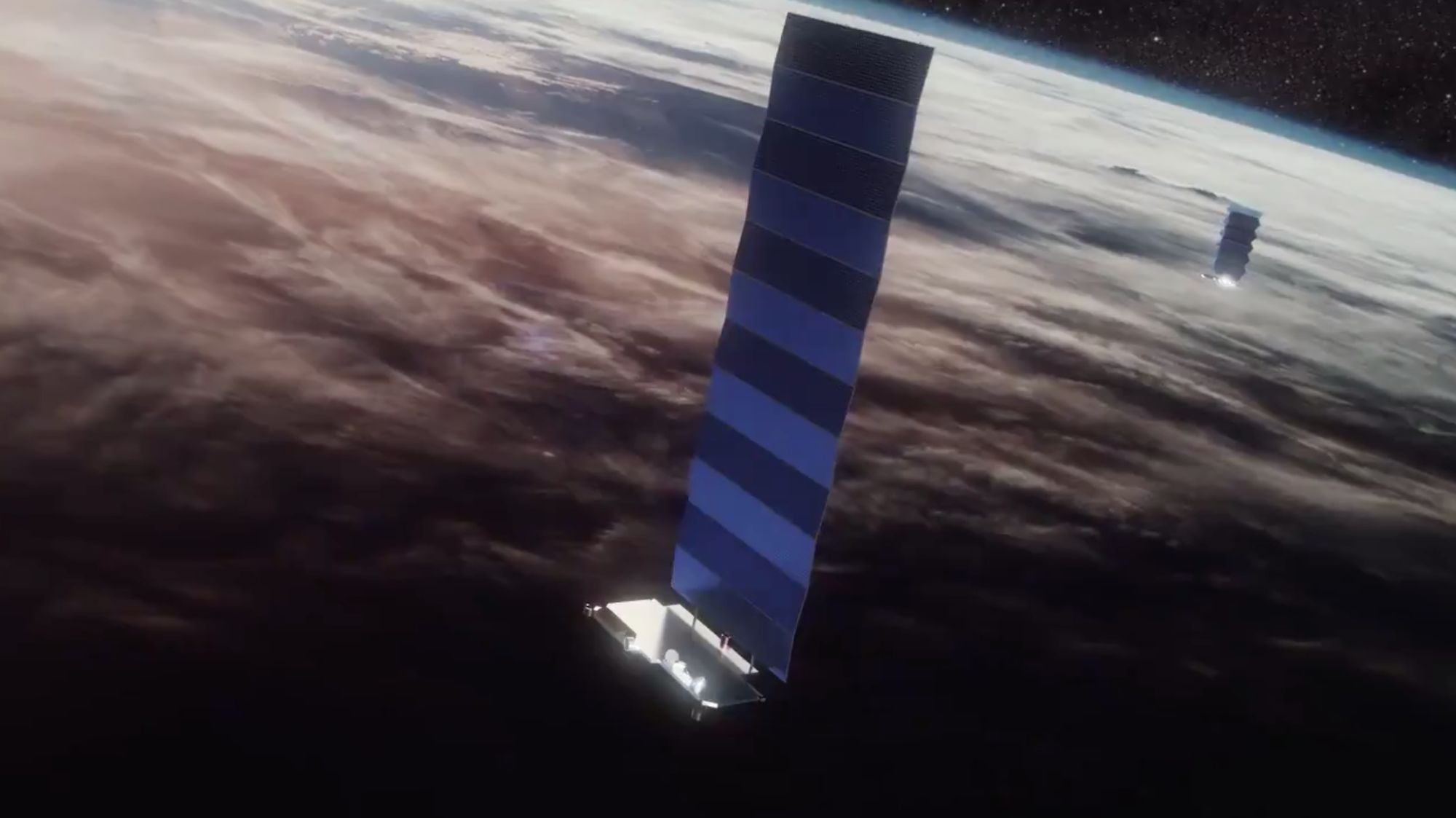WASHINGTON — Viasat has petitioned the Federal Communications Commission to perform an environmental review of SpaceX’s Starlink broadband constellation, arguing that the satellite system poses environmental hazards in space and on Earth.
In a Dec. 22 filing, Viasat formally requested that the FCC conduct either an environmental assessment or more rigorous environmental impact statement of Starlink before approving a SpaceX request to modify its existing license for the system so that it can operate nearly 3,000 more satellites in lower orbits.
Satellite systems have long had what’s known as a categorical exemption from the National Environmental Policy Act (NEPA), which requires federal agencies like the FCC to assess the environmental impacts of their actions. That exemption, implemented in the mid-1980s by the FCC, was based on analysis at the time that launches of individual satellites would not have measurable effects on the environment.
The size of SpaceX’s Starlink system, currently authorized for approximately 12,000 satellites, changes that calculus, Viasat argued in its petition. “But given the sheer quantity of satellites at issue here, as well as the unprecedented nature of SpaceX’s treatment of them as effectively expendable, the potential environmental harms associated with SpaceX’s proposed modification are significant,” the company stated.
“Relying on the Commission’s decades-old categorical exemption to avoid even inquiring into the environmental consequences of SpaceX’s modification proposal would not only violate NEPA, but also would needlessly jeopardize the environmental, aesthetic, health, safety, and economic interests that it seeks to protect, and harm the public interest,” Viasat continued (emphasis in original.)
Part of the petition addresses orbital debris. Viasat has been a strident critic in FCC filings in recent months about the reliability of Starlink satellites and concerns that satellites that fail in orbit could add to the growing debris population in LEO. The company has cited statistics that claimed a failure rate as high as 7%, although that included many of the original “v0.9” Starlink satellites launched in May 2019 that SpaceX has been deliberately deorbiting over the last several months.
SpaceX has countered that its on-orbit failure rate is far lower, but Viasat argued that the FCC should assess the overall risk of increased collisions as part of an environmental review. “The Commission cannot take SpaceX’s word for it that the thousands of satellites it is seeking to pack into a lower orbit will not materially increase the risks of collisions and produce excessive space debris — especially because SpaceX knows that when its satellites do collide with other space objects and fragment or fail, it can always launch more,” it stated.
Viasat’s argument for an environmental review goes beyond orbital debris. It claims that both the launch and reentry of Starlink satellites poses environmental hazards, from the production of ozone-destroying chemicals by launch vehicles to chemicals released in the atmosphere when satellites burn up on reentry and debris that reaches the ground.
The petition cites research by The Aerospace Corporation on atmospheric impacts of launches and reentries. At the Fall Meeting of the American Geophysical Union earlier this month, the organization presented research that concluded that the rise of satellite megaconstellations could increase the mass of satellites reentering the atmosphere from about 100 metric tons a year to as much as 3,200 metric tons.
The Aerospace study, though, only found a potential for environmental impacts caused by an increasing number of reentering satellites, and said that further study on what those impacts could be is needed. “Our preliminary work simply suggests that given the present and anticipated increase in large constellations, there is potential for environmental impact, and further study is therefore recommended,” William Ailor, technical fellow with the Aerospace Corporation’s Center for Orbital and Reentry Debris Studies, told SpaceNews.
A third line of argument for an environmental review is the effect Starlink will have on the night sky. The petition noted concerns astronomers have voiced since the first cluster of Starlink satellites launched in 2019 that the constellation could interfere with astronomical observations, and could also have cultural impacts.
Satellites in lower orbits, Viasat added, would be brighter. “The Commission’s decision thus will directly affect the amount of light pollution in the environment, placing NEPA responsibilities squarely on the Commission’s shoulders,” the company stated.
Viasat’s petition is the not the first attempt to request an environmental review of Starlink. In April, Sens. Tammy Duckworth (D-Ill.) and Brian Schatz (D-Hawaii) asked the Government Accountability Office to examine the FCC’s categorical exemption for satellite systems. It cited in particular light pollution concerns from an unnamed satellite constellation with a description similar to Starlink. A paper published in a law review journal in January also proposed invoking NEPA regarding the impacts of Starlink on astronomy.
The GAO hasn’t publicly responded to the senators’ request. However, astronomers have since reported they’re pleased with the level of cooperation with SpaceX to mitigate the impacts of the Starlink constellation on their observations. That has included the incorporation of visors on Starlink satellites to prevent sunlight from reflecting off the satellites and thus reducing their brightness.
“SpaceX is leading the charge in terms of trying to understand these issues and designing mitigations on their satellites,” Tony Tyson, chief scientist of the Vera Rubin Observatory, said at an August briefing about a workshop held earlier this summer on the topic.
SpaceX hasn’t commented on the Viasat FCC filing. The company has held a series of ex parte meetings with FCC staff this month on its proposed modification of its Starlink license, according to filings with the commission, including a request to launch a set of Starlink satellites into a sun-synchronous orbital plane to take advantage of an unspecified “upcoming polar launch availability.”
